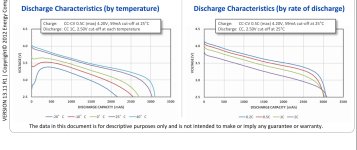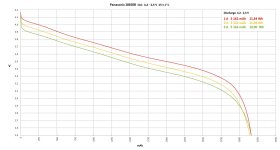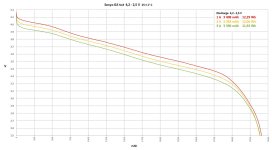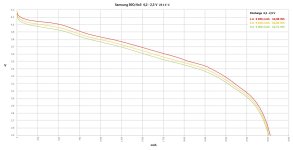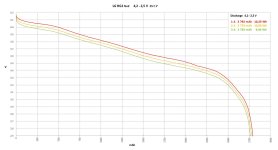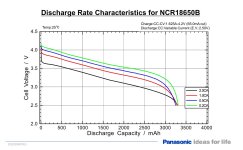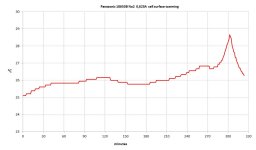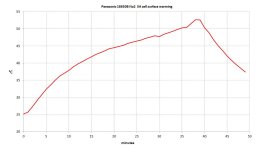CamLight
10 kW
Hillhater said:The effect you are seeing is marginal at best, and does not really show on the Lygt test ! (30T )
But none of this explains the Panasonic chart with 6A crossing the 0.5A plot significantly.
I will say again......I have not seen such a discharge effect before.
If you believe it is a “common” effect, please show another chart, from any cell, to verify this. !
The 0.2C tests have always produced the highest Ah capacity results
I am confused by your post. As mentioned, I have seen this effect many times and I uploaded several graphs to Imgur for you to view and offered to email them to you when you said they were low res when you viewed them. My offer stands.
This effect does not require every cell to exhibit the same behavior as the NCR18650A for that effect to exist. My graphs and HKJ’s do not need to be identical for this effect to exist. Whether we’ve seen a particular type of discharge behavior or not has no relevance to whether that behavior exists or not. There are many hundreds of different cells out there and we certainly haven’t seen the performance of them all. I’ve tested over 325 different cells and I still get surprised by new behavior (for me) occasionally.
Check again my Samsung 30T graph. The added capacity at 20A vs 10A easily meets the degree of change seen in the Panasonic cell.
You mentioned 6A vs 0.5A. I don’t claim that the cells I’ve tested showing this effect have higher capacity at a discharge rate of several C versus 0.2C. Only that the effect seen in Pansonic’s graph exists. I don’t know what the high C rate vs. 0.2C capacity numbers look like for the cells I have tested.
We need to ask ourselves why Panasonic would fake their own discharge data? What benefit could there possibly be for this? Especially when it would be incredibly easy to disprove? Isn’t it much more likely that the graph shows the actual discharge behavior for that cell rather than an attempt to fool their customers?
While this effect is real, there is also the possibility of Panasonic’s graph being just a representation of that cell’s behavior and not a result of any particular test. That is, it shows that the capacity at 2C would be higher than expected but we should not take it literally. I haven’t tested that cell so I can’t say how pronounced the effect is but it wouldn’t surprise me that a manufacturer did this. It would helps prospective customers choose which cells they wanted to test in their application, something the manufacturers always recommend doing instead of just looking at the datasheet and discharge graphs.
An easy solution to all this is to get at least a couple of NCR18650A’s and test their capacity at different rates.


